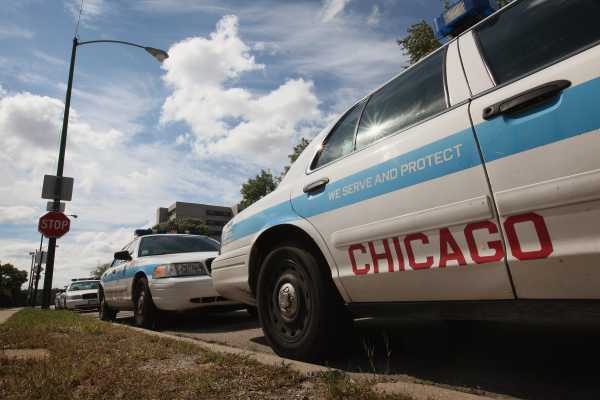
The crime rate in America’s 30 most populous cities may have hit its lowest point since 1990 this year, according to a new report from the Brennan Center for Justice, a public policy think tank.
The report analyzed data from the US’s 30 largest cities, finding drops in the rates of crime, violent crime, and particularly murder (although not all of the cities provided complete data). Brennan researchers Ames Grawert and Cameron Kimble extrapolated the available data to project the full crime rates for 2018 in the biggest US cities.
They found that the murder rate fell this year by nearly 6 percent — fueled especially by big drops in the murder rates in Chicago and San Francisco and a smaller decline in Baltimore.
The overall crime rate is projected to drop by 1.8 percent, putting the crime rate in these cities at its “lowest since at least 1990,” Brennan found. Violent crime is also projected to drop by 2.7 percent.
Not every city is expected to see declines. For example, Washington, DC, and Houston are expected to see increases in the murder rate of 39.5 percent and 22.6 percent, respectively, according to Brennan.
Only 22 cities provided Brennan with data for crime and violent crime, but all 30 provided data for murder. The findings largely support Brennan’s earlier 2018 report from September.
This would be the second year of good news, after the FBI confirmed that crime and murder rates fell in 2017 too. That stands in contrast to an increase in the murder rates in 2015 and 2016, but reflects a decades-long trend toward less crime and murder in the US.
Brennan has been putting out these reports over the past few years to give a more up-to-date estimate of crime trends. The FBI releases a national report with crime statistics each year, but with a big delay; the FBI’s full report for 2017, for example, came out after Brennan released its first report on 2018 in September.
“We think there is a lot of misinformation on crime and crime rates,” Inimai Chettiar, director of the justice program at the Brennan Center, previously told me.
“Certain politicians put out all sorts [of claims] on crime that not only tend to alarm the public, but also bring out really bad and unnecessary policy changes,” she added, citing mass incarceration and an immigration crackdown. “Before we’re even having those policy debates about what needs to be done to solve the problem, we need to make sure whether there actually is a problem or not.”
Brennan’s numbers are projections, so they might not be completely accurate, and they’ll be updated as the group gets more data. But until we get the FBI’s full national crime data for 2018 in the late summer or fall of next year, the Brennan report is the best we have to go by.
And it’s good news.
There’s no American carnage
The 2015 and 2016 increases in the murder rate got a lot of attention, with President Donald Trump and then-Attorney General Jeff Sessions often bringing them up in speeches to justify “tough on crime” policies. But before they were able to implement such policies and let them take root (especially in local and state jurisdictions, where federal policymakers have very limited power), the rates already seem to be dropping.
Criminologists still aren’t sure why murder in particular appeared to spike so much in 2015 and 2016. Some argued that there might have been a “Ferguson effect,” named after the city in Missouri that exploded into protests over the police shooting of Michael Brown: Due to protests against police brutality over the past few years, police were, the theory goes, scared off from proactive policing, emboldening criminals.
Other experts argued a different kind of Ferguson effect: Widely reported incidents of police brutality and racial disparities in police use of force led to elevated distrust in law enforcement, which makes it much harder for police to solve and prevent crimes.
Yet many criminologists cautioned that it’s also possible 2015 and 2016’s increases were blips in the data, not a new long-term trend. This isn’t unprecedented; in 2005 and 2006, the murder rate in the US increased before continuing its long-term decline — to new record lows — in the ensuing years.
Since the murder rate in particular is generally low, it’s prone to big statistical fluctuations. As one example, Brennan found that Las Vegas saw a 23.5 percent increase in its murder rate in 2017, but that was due to the mass shooting that killed 58 people. A single event, albeit a very bad one, led to a dramatic spike.
That’s why criminologists generally demand several years of data before they declare a significant crime trend.
It now looks possible — though we’ll need more years of data to confirm — that 2015 and 2016 were replays of 2005 and 2006. If that holds, then perhaps the US isn’t in the middle of the “American carnage” that Trump has warned about.
For more on what works to combat crime and violence, read Vox’s explainer.
Sourse: breakingnews.ie
0.00 (0%) 0 votes


































